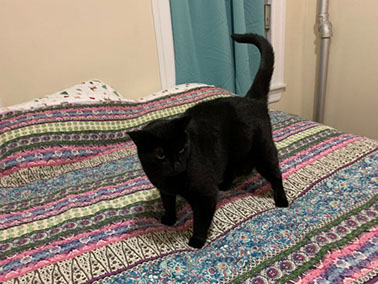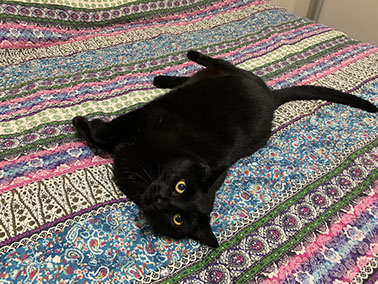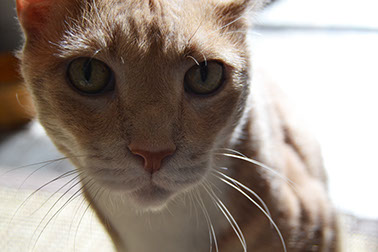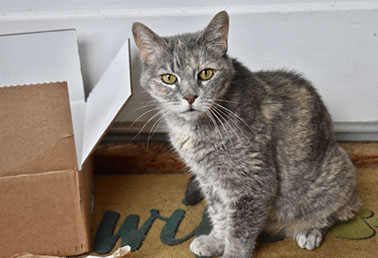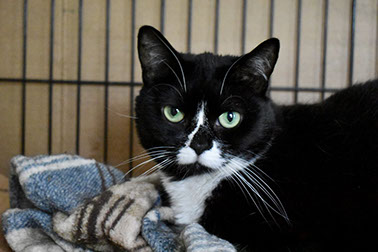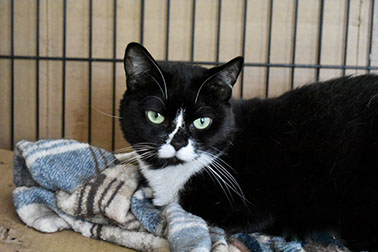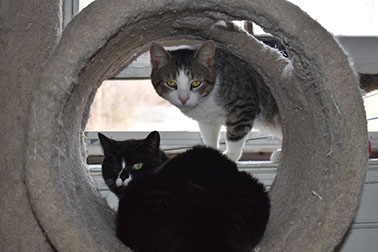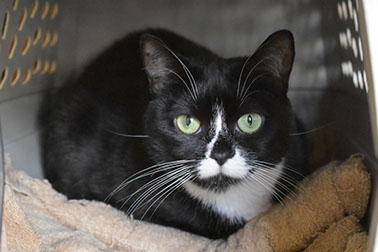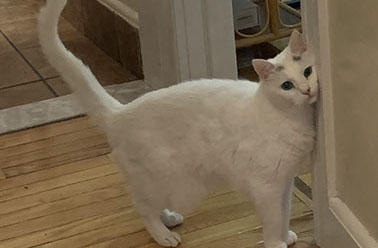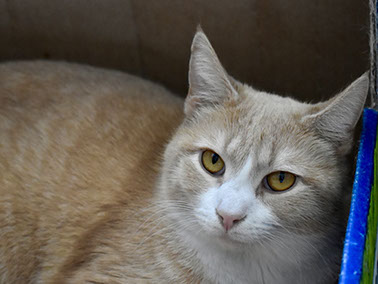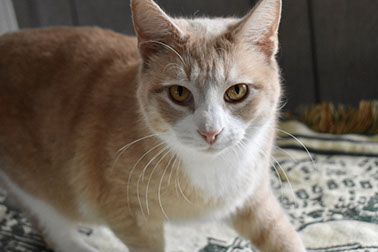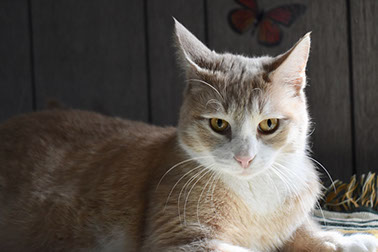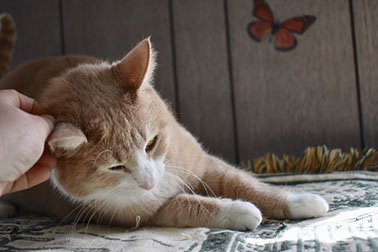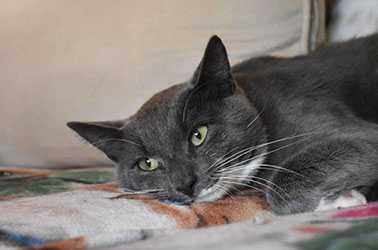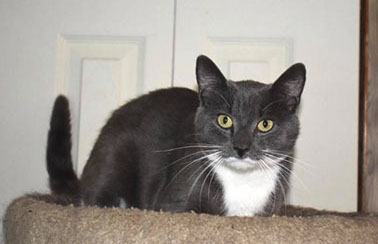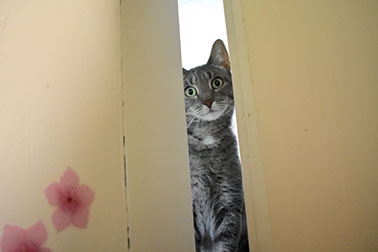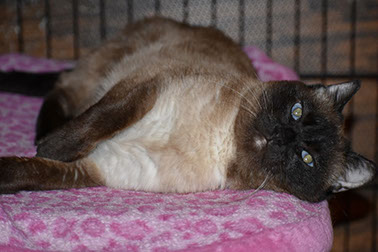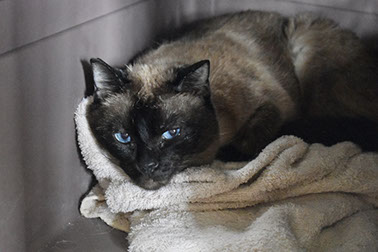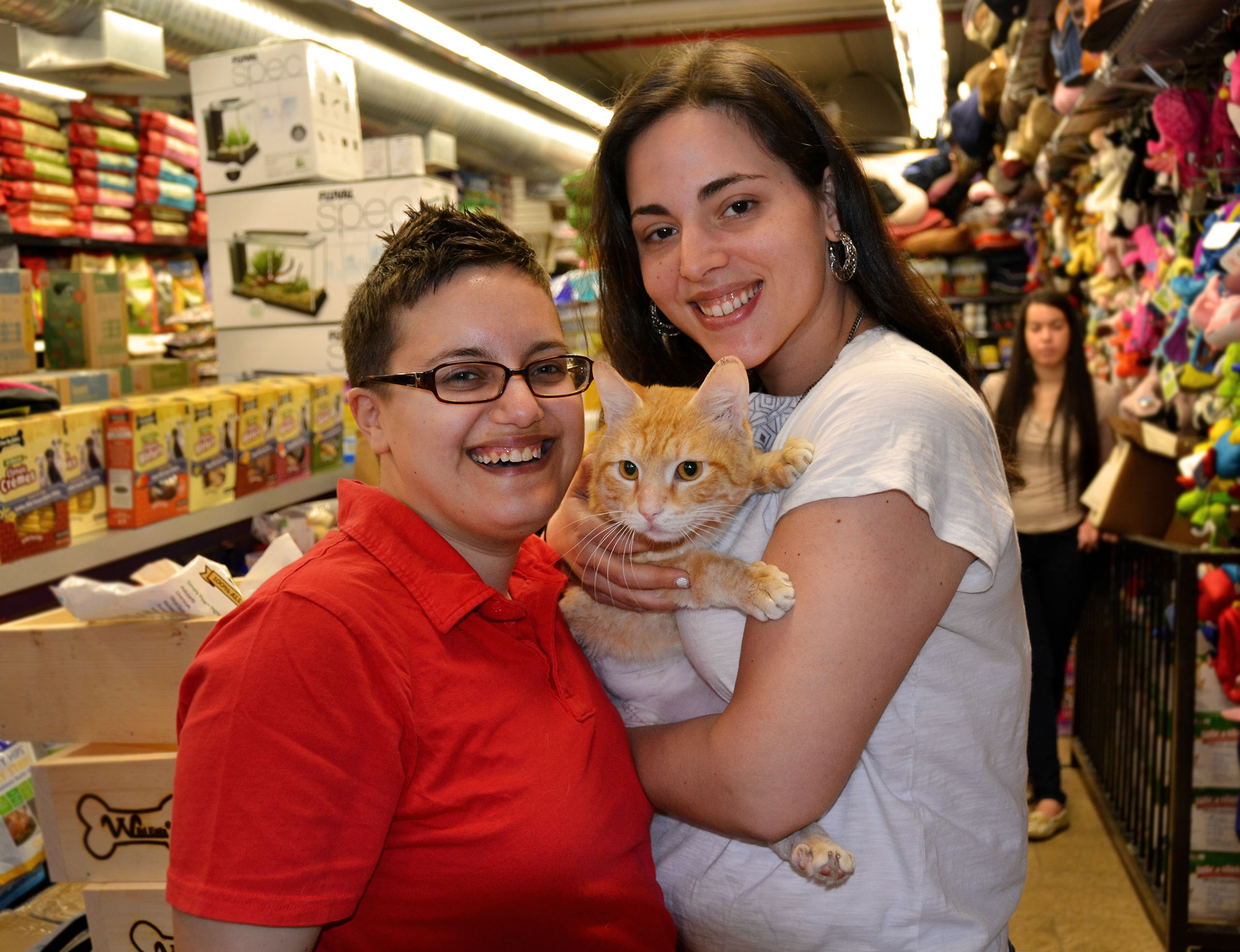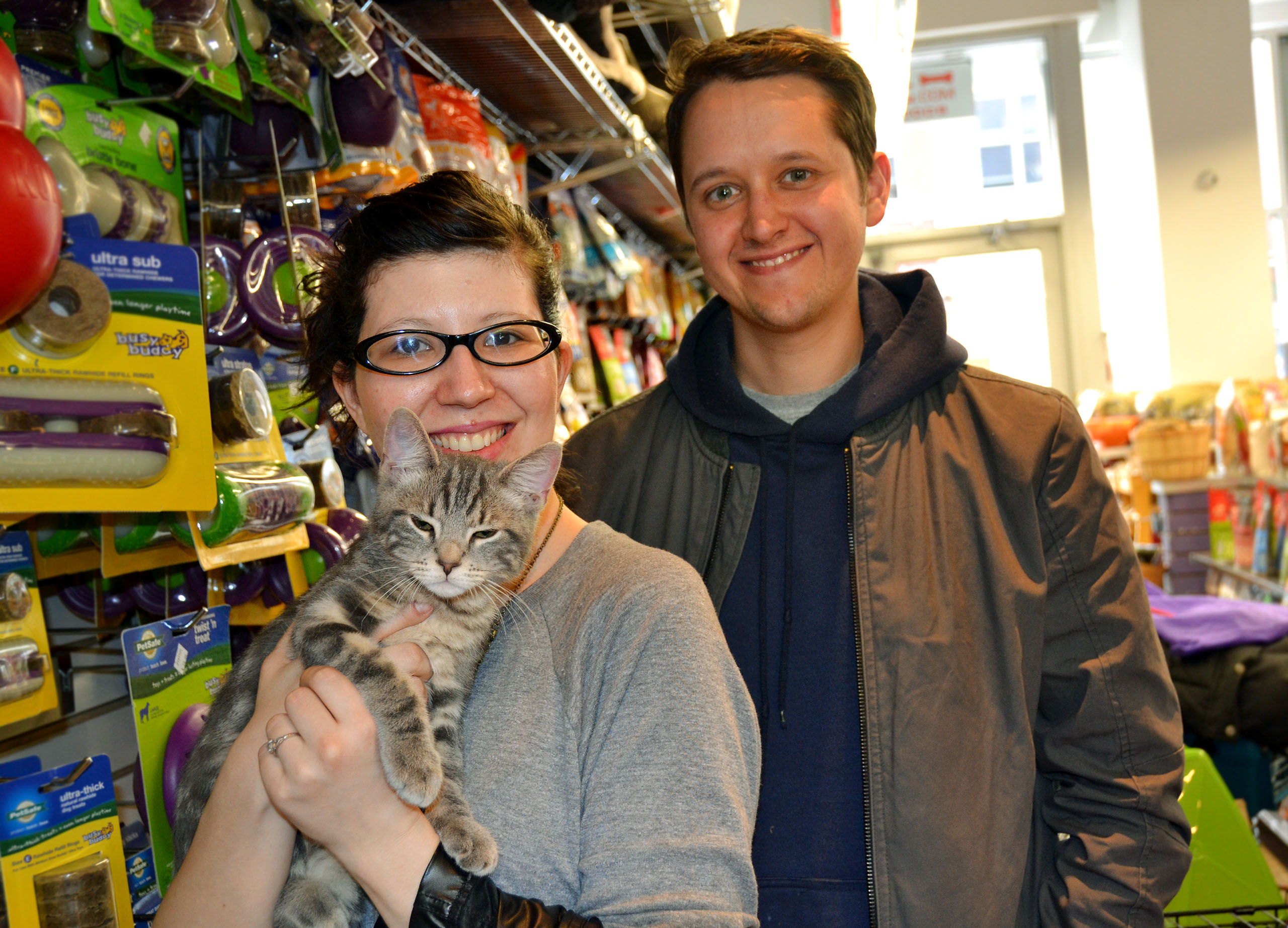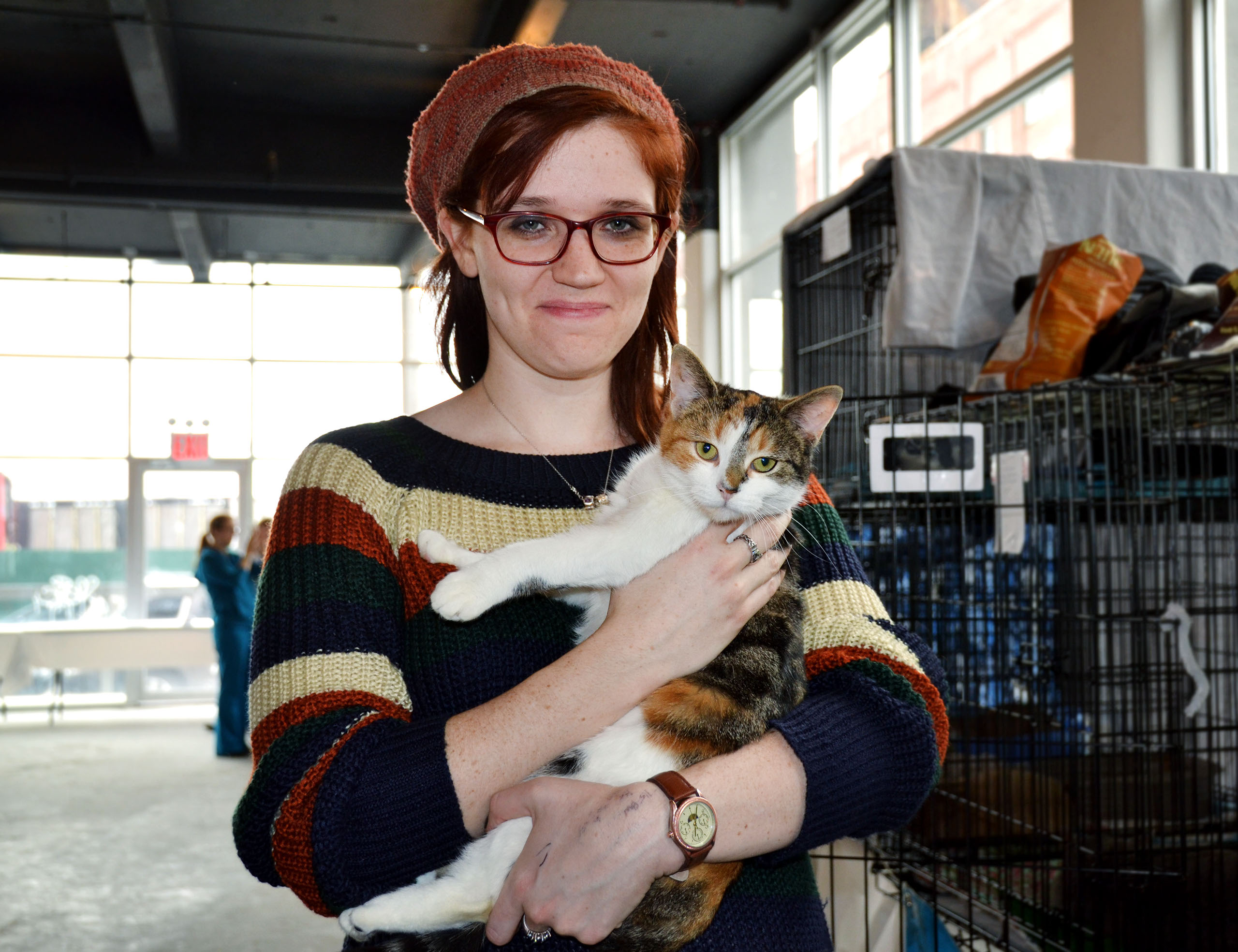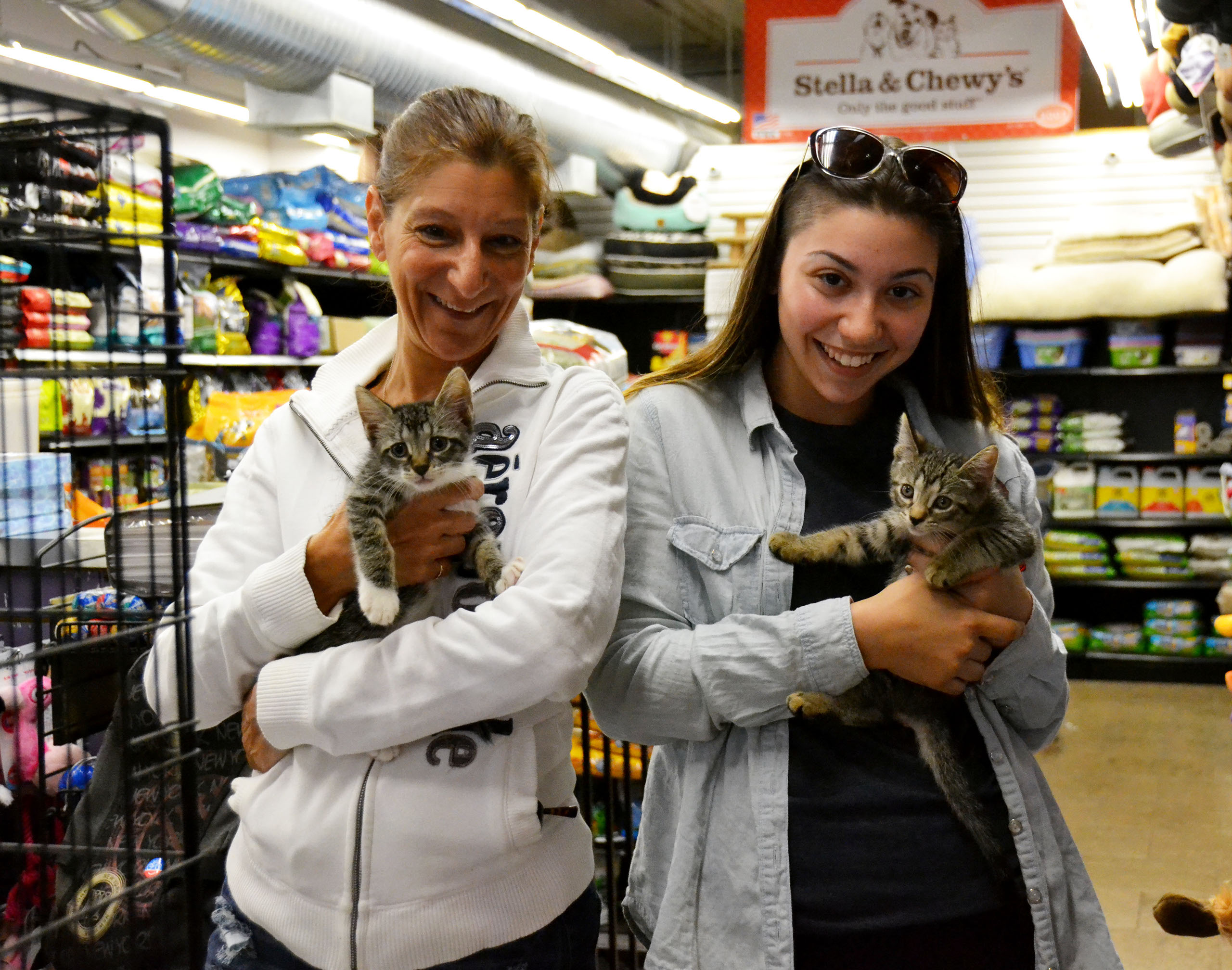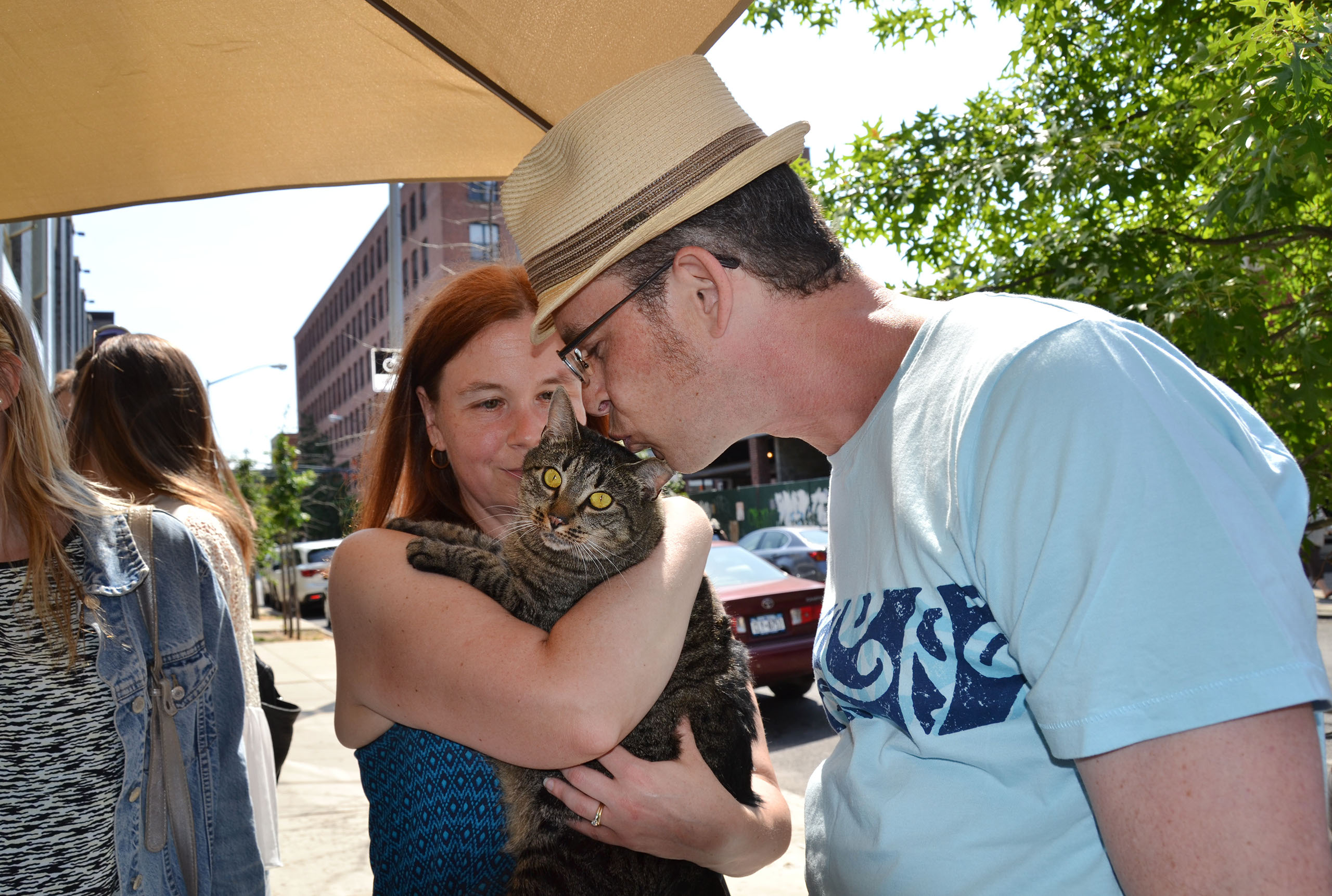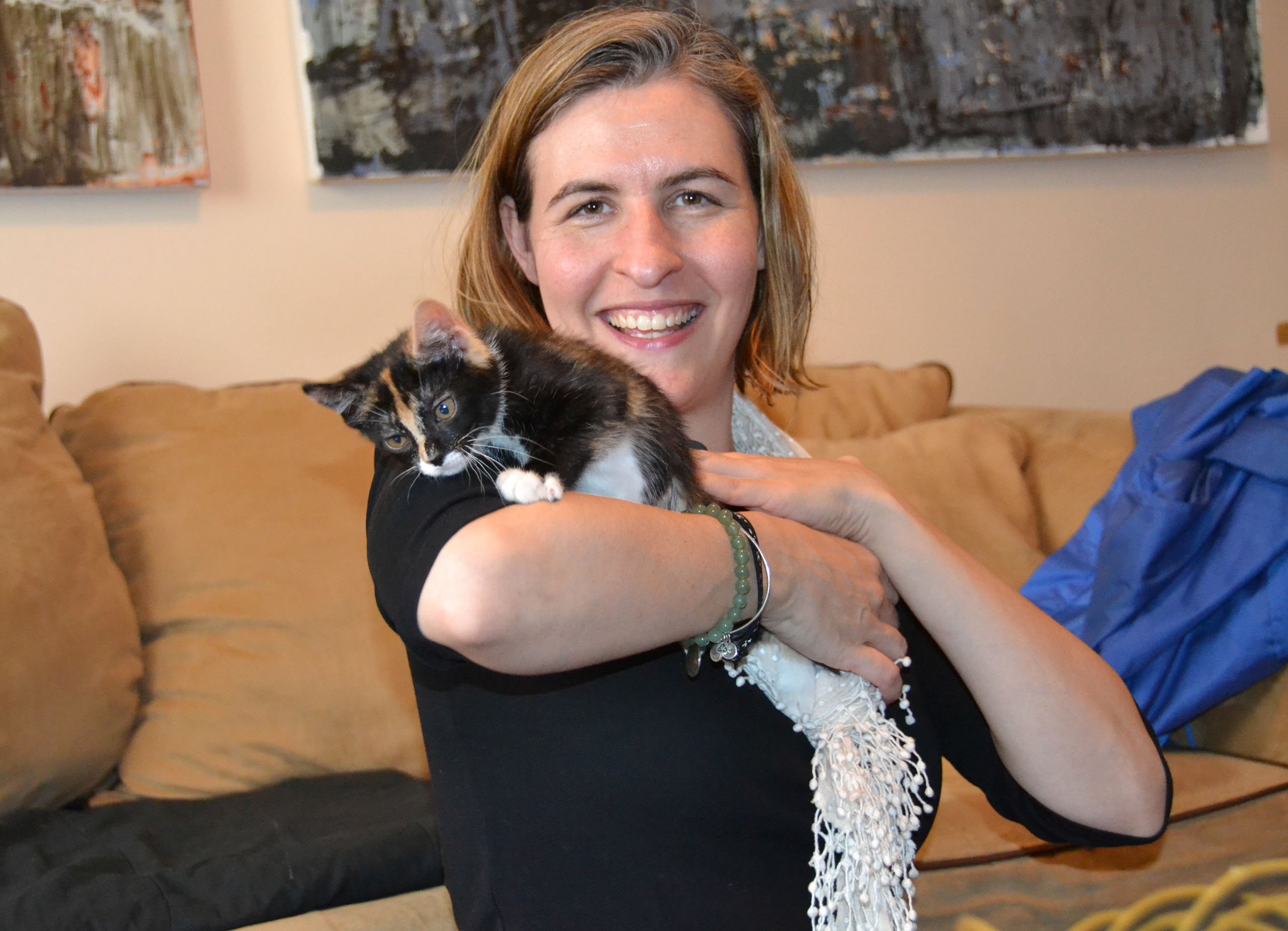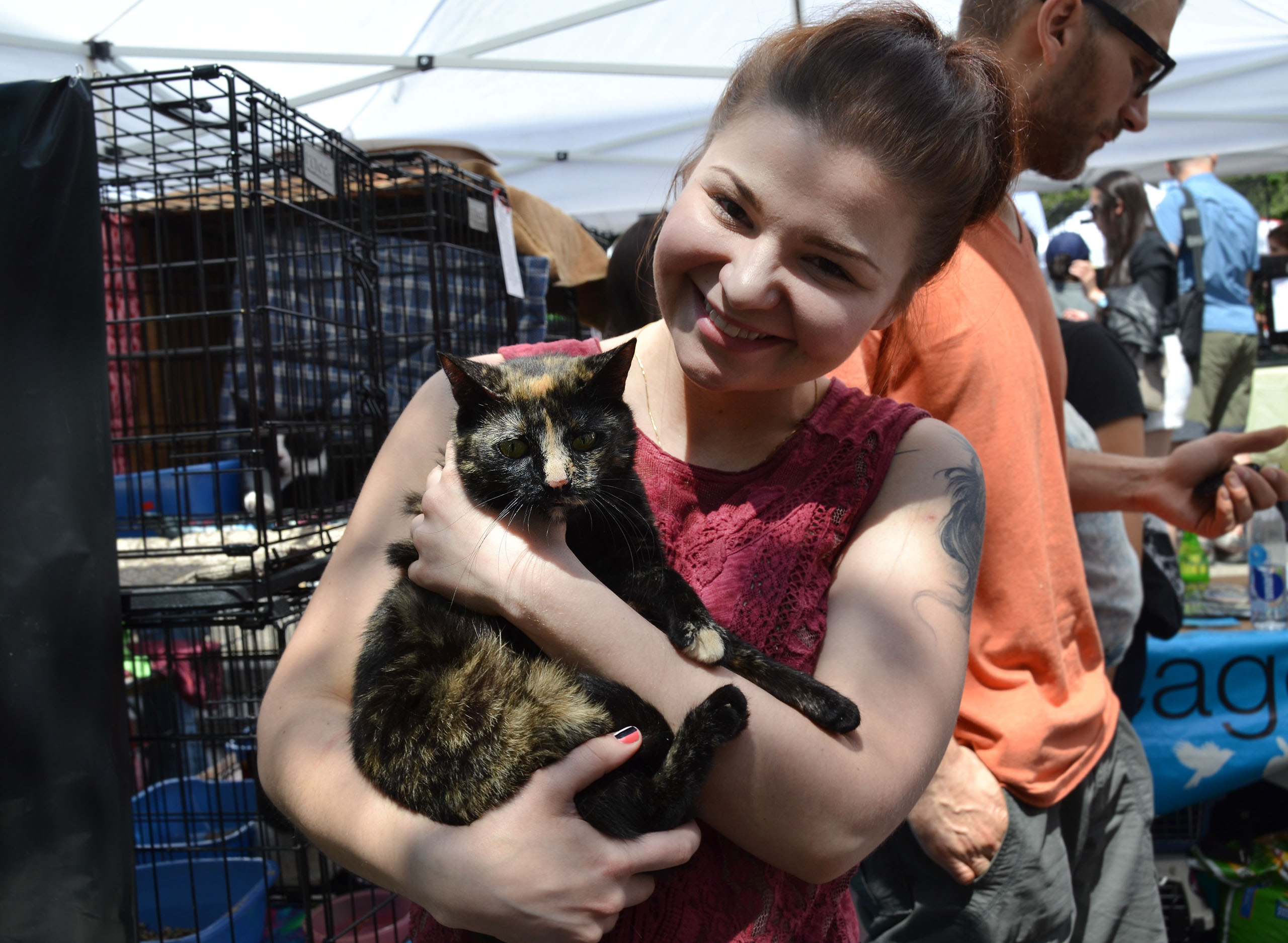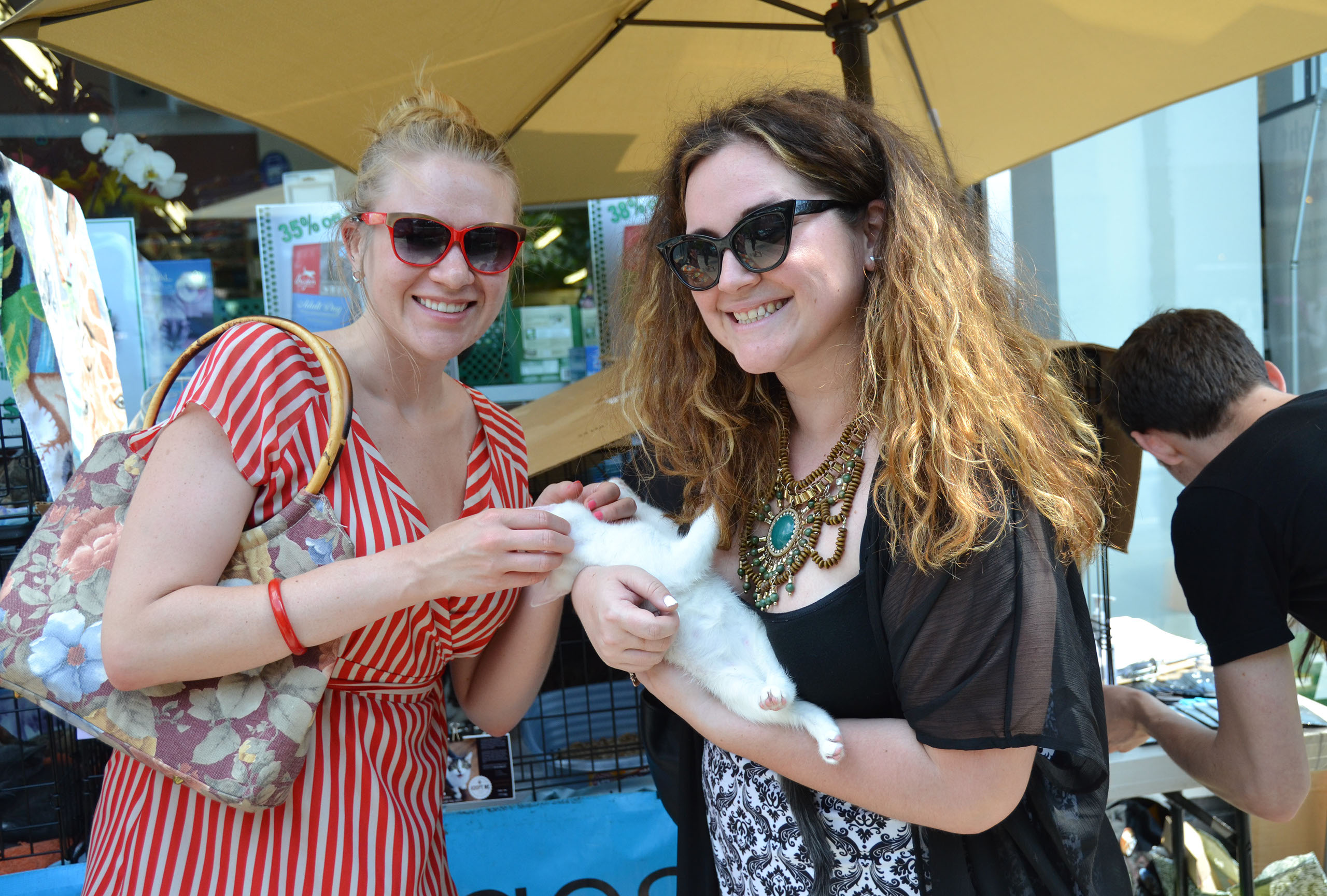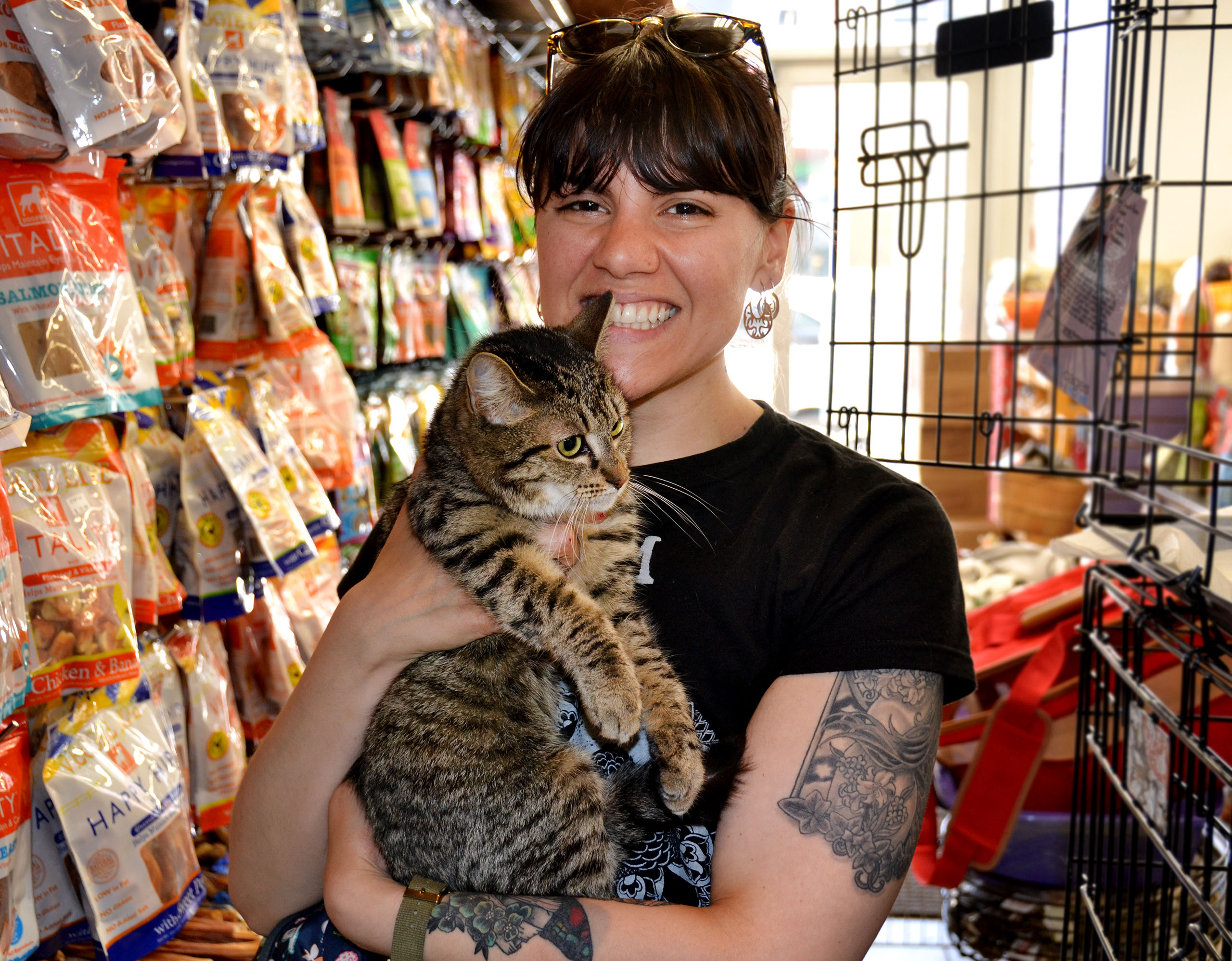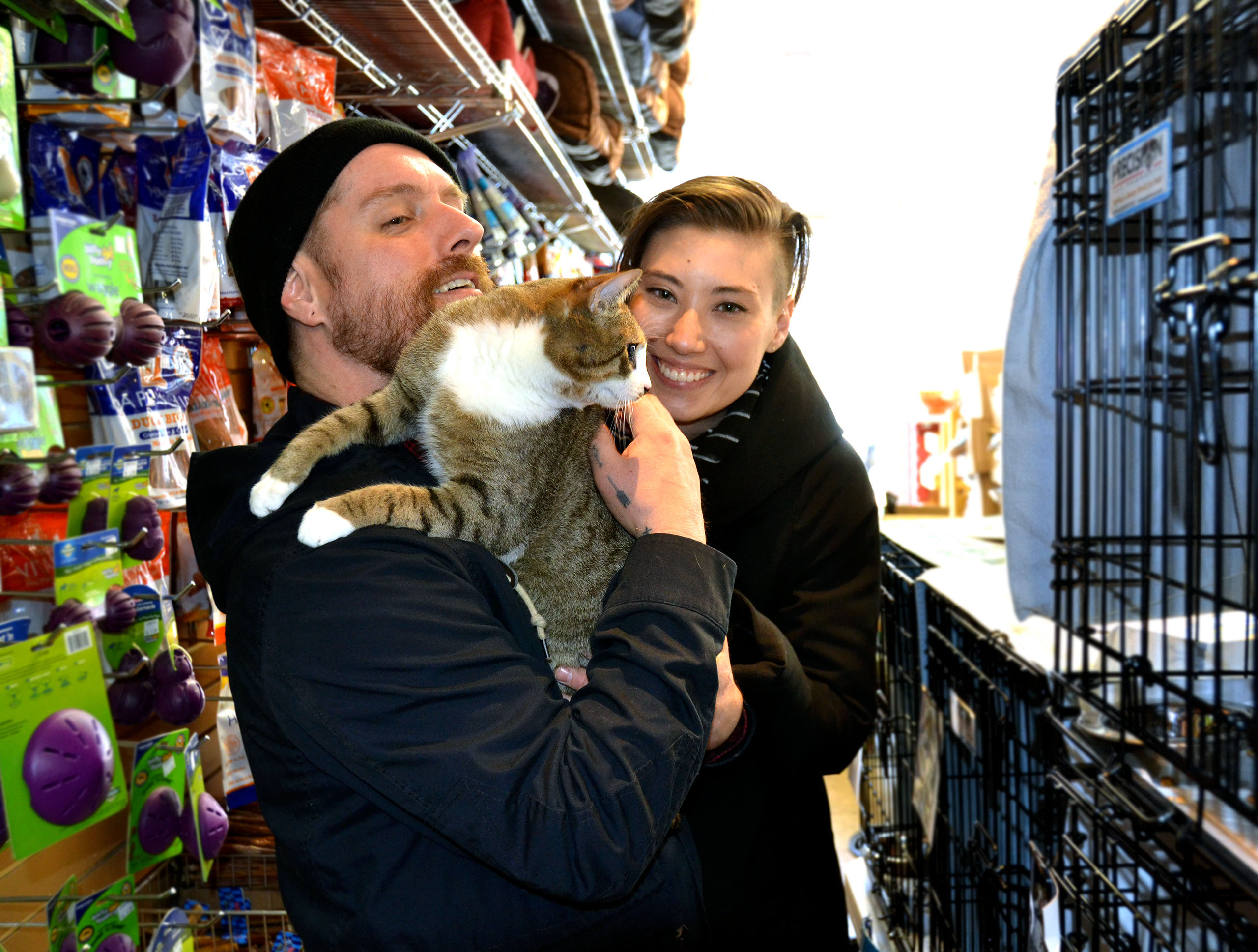The Humane Society of the United States, the ASPCA, and other supporters, estimate the nation’s feral felines numbers to be from 50 million to 150 million.
Cats roam outside in most neighborhoods in the United States. These community cats may be feral or one-time companion animals who are stray, lost or abandoned.
A stray cat is a pet who has been lost or abandoned, is used to contact with people, and is tame enough to be adopted. A feral cat is the offspring of stray or feral cats and is not accustomed to human contact. Feral cats are usually too fearful to be handled or adopted. Stray cats may be reunited with their families or adopted into new homes, but feral cats will find it difficult, or impossible to adapt to living as pets, in close contact with people. But that doesn't mean there aren't many things we can do to improve feral cats' health and quality of life.
If they don't have early contact with people, the kittens of stray or feral cats will become feral, too fearful to be handled or adopted. Since a female cat can become pregnant as early as five months of age, the number of feral cats in a neighborhood can rapidly increase if these cats are not spayed or neutered.
Community cats typically live in a colony- a group of related cats. The colony occupies and defends a specific territory where food (close to a restaurant, a dumpster, or by a caregiver who feeds them) and shelter (beneath a porch, in an abandoned building, etc.) are available. Although feral cats may be seen by people who feed them, strangers may not realize that feral cats are also living nearby, because we so rarely see them.
On the other hand, stray cats tend to be much more visible and vocal. They often approach people in search of food and shelter, and they may join an existing colony, or create and defend a territory of their own.
Sadly, the hard live of community cats translates to a short life span for these animals, and we should make an effort to help them whenever possible.
Groups such as PETA has repeatedly stated that lives of community cats are worthless because they are hard, and that killing them is a kinder option. We at ECC find this statement deeply flawed and lacking in compassion. Every life is worth in-itself, and all sentient beings have a continuing desire to live. Methods such as euthanasia should not be used for convenience, but only for painless killing of an animal suffering from an incurable and painful disease, or while in an irreversible coma.
While overpopulation continues to be a big issue for domesticated animals, it is found that spaying and/or neutering a community (feral and stray) of cats using Trap-Neuter-Return (TNR) helps dramatically.
TNR is a nonlethal strategy for reducing the number of community cats, and improving the quality of life for cats, wildlife, and people.
At its most basic, TNR involves:
- Humanely trapping community cats.
- Spaying or neutering them.
- Vaccinating them against rabies.
- Surgically removing the tip of one ear (a "tipped" ear is the universally-recognized sign of a cat who has been spayed or neutered).
- Returning the cats to their home.
To see more info on Feral Cats and TNR click here and here. Here if you would like to register for a TNR workshop, and become a certified TNR person. A step by step guide on how to TNR can be found here.


You will save a life
A shelter animal is more than one in a million- she's one in 2.7 million. That's the number of adoptable dogs and cats who are euthanized each year in the United States, simply because too many animals come into shelters, and too few people adopt. The number of euthanized animals could be reduced dramatically if more people adopted, instead of buying them. When you adopt, you save a life, and open up shelter space, or a foster home, for another animal who needs it.
You will meet a great animal
Animal shelters and rescue groups are brimming with happy, healthy animals, just waiting for someone to take them home. Most shelter animals ended up there because of a human problem, like a move or a divorce, not because the animal did anything wrong.
When you adopt, all vetting of the animal has already been done, and the adoption fee is far less then if you were paying for the vetting yourself.
Cost of Spay & Neuter
When you adopt a cat, the cost of spay/neuter, first vaccinations and sometimes microchipping is included in the adoption price, which means you've now scored a major deal- a fuzzy, best friend for life, deal who will thank you with kisses or purrs for many years to come!
The bragging rights
No one wants to see another selfie… unless it’s a selfie of you with the adorable cat you have just adopted! Adopt a cat with us, post the picture(s), tag us #emptycages for Twitter or #emptycagescollective for Instagram, and let the likes roll in!
This is one way to fight puppy mills
Puppy mills are "factory style" breeding facilities that put profit above the wellbeing of any animal. Animals from mills are housed in shockingly poor conditions, with no medical care, and are often very sick, and behaviorally troubled as a result. The moms of the sellable kittens and puppies are kept in dirty, small cages, to be bred over and over, for years, without any human companionship, and with no hope of ever joining a real family. And after they're no longer profitable, breeding dogs and cats are simply discarded- they are either killed, abandoned, or sold at auction for other less them kind means.
Sense of purpose and fulfillment
Not only do adopted cats give you unconditional love, but they have been shown to be psychologically, emotionally and physically beneficial for their adopters. Caring for a companion animal can provide a sense of purpose and fulfillment, and lessen feelings of loneliness and isolation in all age groups. And when you #AdoptDontShop, you can also feel proud about helping an animal in need!
You will change a homeless animal's whole world, and get a new best friend in the bargain. Seriously, what could be better than that?!
Was there ever a doubt? Cats talk to us, and the more effort we put in understanding our feline companions, the better chance we will have for a harmonious and close relationship.
There are so many fascinating ways that cats communicate with each other and with us. Mild and controlled signs of body language such as a flick of the tail, or the slightest movement of the ears, send messages that are worth a thousand words to another cat.
Cats make a variety of sounds that have been given colorful and descriptive names. Their purpose can range from expressing contentment to a call for help, from solicitation of food or companionship, to a bloodcurdling expression of stark terror.
To learn more about cat talk and body language click here and here.

When you look at what cats do in the wild, it becomes obvious why they need to play. They sleep as much as 16 hours per day, and when they're awake, they need the action and hunt-performance, that play makes possible.
Play time provides exercise, release of anxiety and boredom, and it enables bonding with another cat, or other animals in the home. It is a vital part of any feline's life, as walking is to any dog's wellbeing.
For Litter box positioning and care return to our *After You Adopt* page.
Spaying/Neutering is essential to keeping our cats healthy, happy, and plays a vital part in curbing pet overpopulation. Approximately 7,6 companion animals enter shelters nationwide. Of those, approximately 3,9 million are dogs and 3,4 million are cats, Each year around 2,7 million animals are killed in those shelters.
1,2 million are dogs and 1,4 million are cats.
To learn more about the benefits and importance of Spaying/Neutering click here.
*All ECC cats are already fixed, vaccinated, had their stool analyzed, and have been tested for FIV/FELV. Most of the cats are microchipped as well*
-The Natural Cat and Catification.
The most important thing to discuss when talking about cat's health is their diet.
While most of us at ECC are VEGAN, and would love for our cat children would join us in the lifestyle, we understand that cats are Obligate Carnivores. They are equipped with strong jaws and sharp teeth that are made for ripping and tearing meat, and crunching through the pliable raw bones of small animals. They have strong stomach acids, as well as shortest digestive tract compared to body size of almost any mammal, that are made to efficiently process raw meats and bone material.
Sadly, the popular feline diet of today is cooked, over-processed canned and kibbled products, that eventually leads to significant health complications. Switching to feeding caloric and nutrient sufficient raw foods, will help improve feline digestion, improve overall heath. It has been knows to eliminates 'kitty breath', and gives psychological and physical stimulation that increases vitality, while positively influencing your pet’s overall quality of life.
To read more about the benefits of raw foods click here, and to learn how to make it click here. Also, to further educate yourself on feline biology, and study cat's natural environment, and why cats are an obligate carnivores, see this article.



Introducing a Cat to a Dog
Introducing 2 Cats to each other
Before bringing your new fur-child home, outfit your home with all the supplies you could possibly need. This means water and food bowls, litter box and litter, scratching post, cat beds, some interactive cat toys, and most importantly, screens on your windows. Good idea is also to brush up on ways of keeping your cat stress-free and happy. Here is a good article on the topic.
The first thing you will need to know is that most cats hate to travel. For the trip home, confine the cat in a sturdy cat carrier. Don't leave him/her loose in your car, where he/she might panic and cause an accident, or get out when you open the car door. The cat may yowl and cry, and try to get out of the carrier, but don't give in.
After the ride home, the cat will, most likely, not be in the mood for fun. To make the transition to your household as comfortable as possible, select a quiet, closed-in area, such as your bedroom or a small room away from the main foot traffic, and provide the cat with a litter box, food and water, toys, and a scratching post.
Let your new cat child become acquainted with that limited area for the first 3-5 days. Be sure to spend plenty of time with the cat in that room, but if he/she is hiding under the bed, don't force the cat to come out. If necessary, sit on the floor to talk to the cat and offer treats. Let the cat sniff all your belongings and investigate all the hiding places.
Your new buddy may be full of self-confidence and itching to get out and make it known he/she is home, or more time and a gradual transition may be what's needed.
Over a few days, slowly help your cat become familiar with the rest of the family, including other animals, and household members. Make sure the cat always has access to "his/her" room so he/she can retreat to it when nervous. It might take a while, but all cats will eventually start to feel like they are home. Regular feeding and playing routine always helps, as well as keeping yourself on their level. Kneeling, or laying down is far less intimidating then hovering over them.
To learn more about what your cat is telling you, as well as to pick up a few tricks in order to make your cat more comfortable, click here. And to read about the importance of regular vet visits, see here.
Introducing a Cat to a Child










